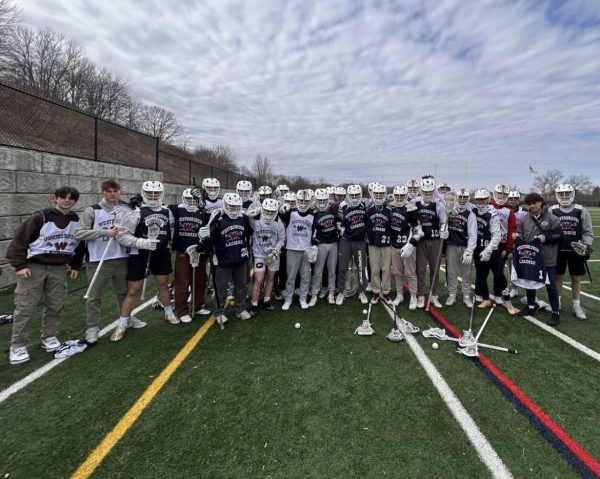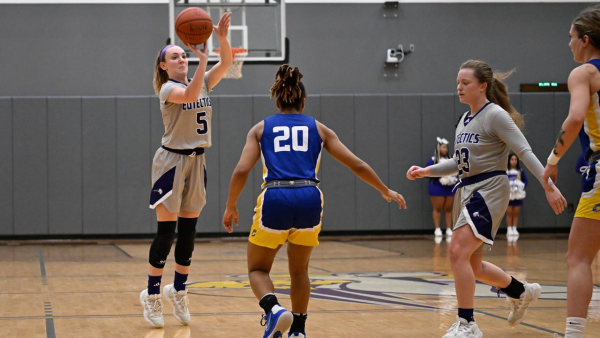High School Football Injuries: What is being done?
January 22, 2019
High school football holds a special place in American hearts, with 1,036,847 boys and girls playing 11-on-11 football during the 2017-18 season, the highest participation of any sport in high school. These high numbers paint an extraordinary picture of football’s popularity, but according to the National Federation of High School Associations (NFHS), the participation has dropped two percent since 2016, and four and a half percent from 2015.
Why did this decline happen? We can see that football has come under massive scrutiny in the professional world with reports of CTE rising in recent years. Chronic Traumatic Encephalopathy (CTE) is a cognitive disease caused by repetitive brain trauma, which results in a protein called Tau clogging the brain and killing its cells. This can cause memory loss, confusion, aggression, depression, vast mood swings, and in late stages, dementia. In a study of 111 brains of former football players, the New York Times found all but one had CTE. These findings have steered players and often parents away from the contact sport.
Injuries have always been a part of any and all sports: sprains, cuts, and in rare cases broken bones all happen. Yet football, above all, is known for the violent, large scale injuries. In light of the nature of the sport, and progressively increasing number of pleas for safety, the NFL, NCAA, and NFHS have implemented rules to protect players. In 1977, the Head Slap rule took effect to protect players from opponents bashing players’ heads to gain leverage, a move which Deacon Jones, a standout defensive end for the Los Angeles Rams, used to great length (his career was built from it). First of its kind and not the last, the Head Slap rule sought to create a safer playing environment for the athletes.
This legislation did not have much effect on high school football, as the technique was not known to be commonly used, but the next rules would affect all levels of football. The helmet leading rule was then implemented on all levels to prevent spearing, an act where a player uses the crown of the helmet to hit another player. Furthermore, the definition of a “defenseless player” was created. A defenseless player would be unable to avoid any type of hit through a football move or be unable to brace for such a hit. These rules and many others including horse collars, roughing the passer, and chop blocks have been implemented to keep players safe.
This begs the question, have they? According to University of Colorado Denver’s Program for Injury Prevention, Education & Research (PIPER), the numbers for high school boys football injuries have remained the same, averaging about 3,000 a year, and a quarter of those being concussions (sprains/strains were the most common) between 2013 and 2018. Comparing this data to earlier years (2008-2011), the trendline has increased, with not only more injuries but less concussions.
However, more serious injuries and deaths have been on the decline since 2000, proving that the game has become less fatally dangerous, in accordance with the NCCSIR census. In addition to regulations on tackling and equipment, teams and coaches have been teaching different techniques to increase safety for both the tackler and the tackled. Pioneered by the Seattle Seahawks of the NFL, the new form of tackling involves the use of the shoulder, rather than the head as the lead for the tackle, similar to a rugby tackle.
Developed by Seattle assistant coach Rocky Seto when he joined the team in 2010, the technique has led to lower numbers of concussions being recorded since. The rest of the NFL, colleges, and high schools have all adopted these techniques and have begun teaching it religiously, hoping for a safer player environment. A safer game is attainable, and more kids can enjoy playing the game Americans love so much.
Sources:
Davis, Scott. “The Seahawks’ Dominating Defense Uses a Safer Rugby Style of Tackling, and It Could Change the NFL.” Business Insider, Business Insider, 14 Jan. 2017, www.businessinsider.com/seahawks-tackling-style-could-change-nfl-2017-1.
Willingham, AJ. “Deaths on College and High School Football Fields Are a Rare — but Reliable — Tragedy.” CNN, Cable News Network, 1 Oct. 2018, www.cnn.com/2018/09/21/health/football-deaths-season-injuries-high-school-college-trnd/index.html.
Garda, Andrew. “Tracing the Evolution of Player Safety Throughout NFL History.” Bleacher Report, Bleacher Report, 3 Oct. 2017, bleacherreport.com/articles/1113196-tracing-the-evolution-of-player-safety-throughout-nfl-history.
“High School Sport Participation Increases for 29th Consecutive Year.” NFHS, www.nfhs.org/articles/high-school-sports-participation-increases-for-29th-consecutive-year/.
“Colorado School of Public Health.” Http://Www.ucdenver.edu, www.ucdenver.edu/academics/colleges/PublicHealth/research/ResearchProjects/piper/projects/RIO/Pages/Study-Reports.aspx.
Sayers, Devon M., and Eric Levenson. “Georgia High School Football Player Said, ‘I Can’t Feel My Body,’ Then Died. But Why?” CNN, Cable News Network, 2 Oct. 2018, www.cnn.com/2018/10/01/health/georgia-high-school-football-player-dies/index.html.










